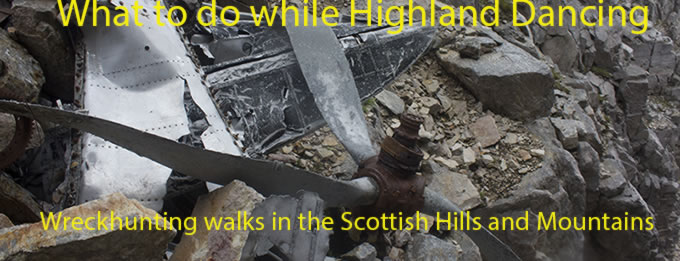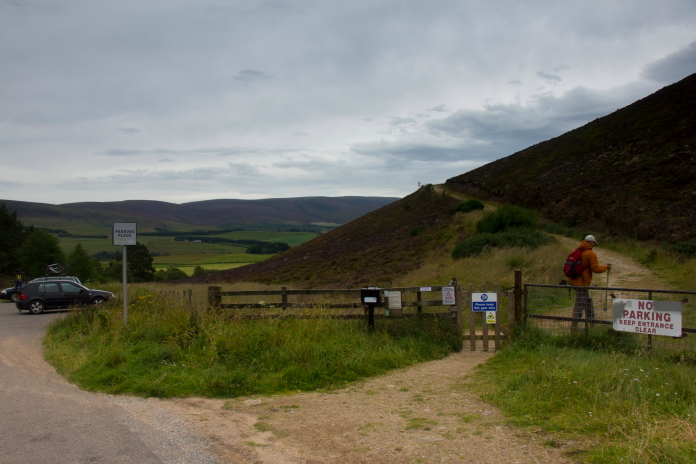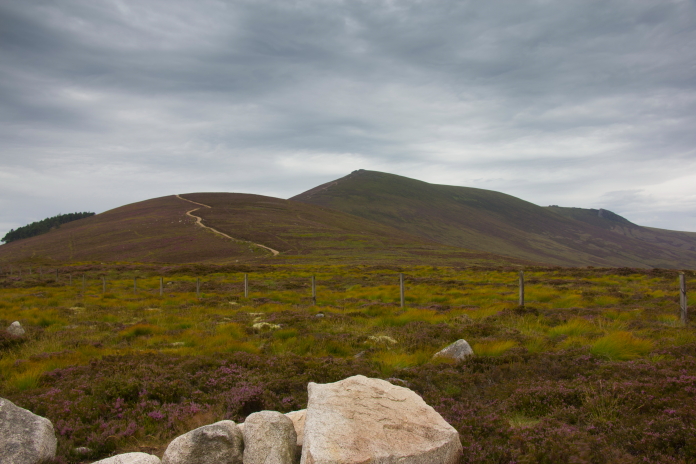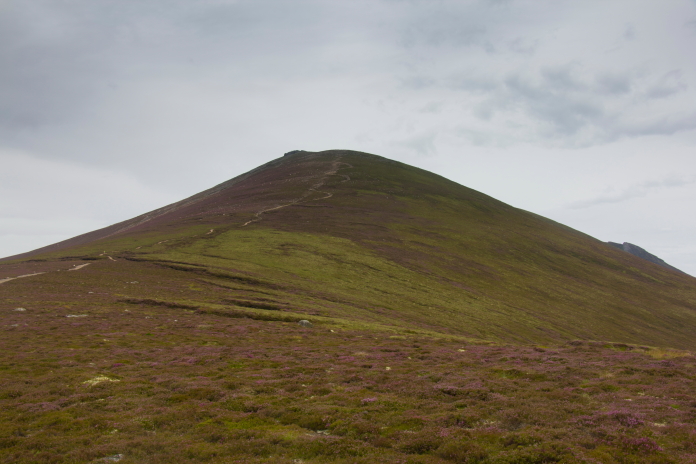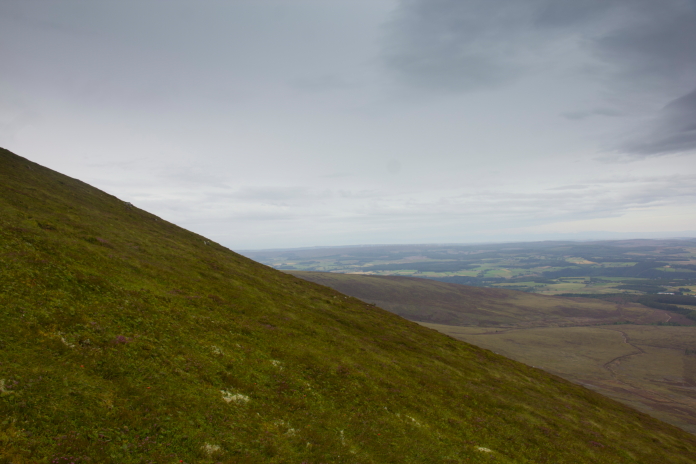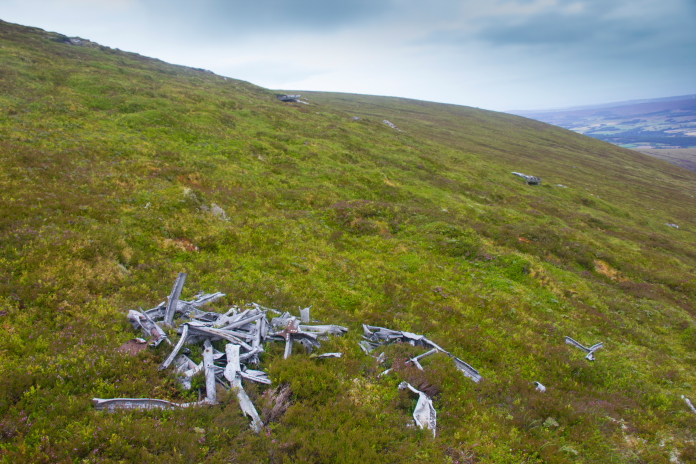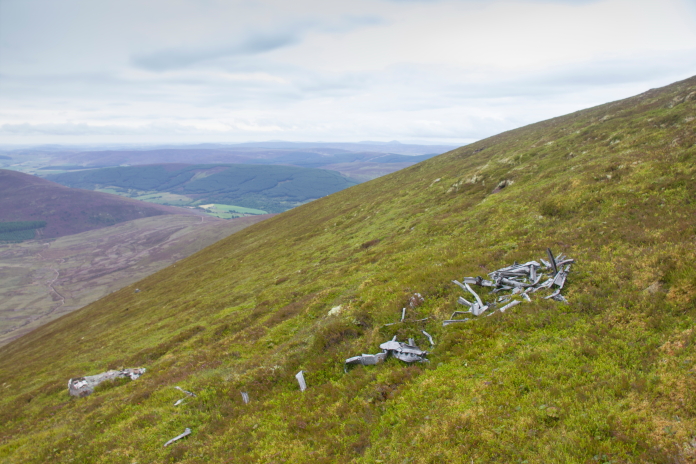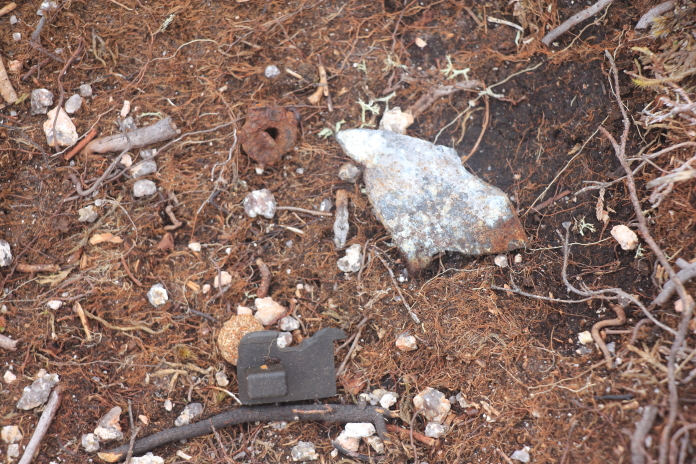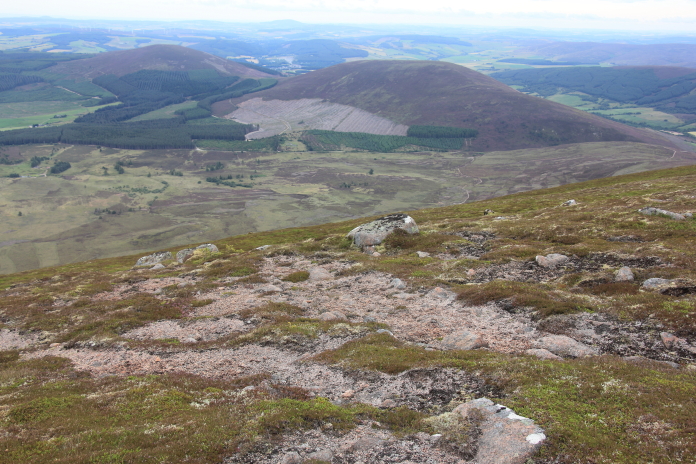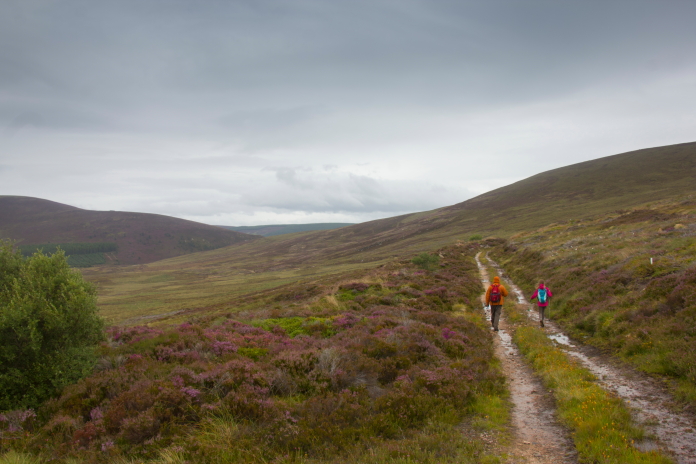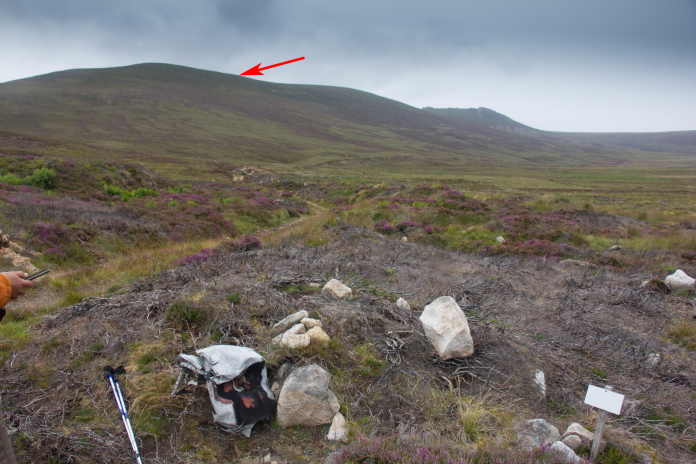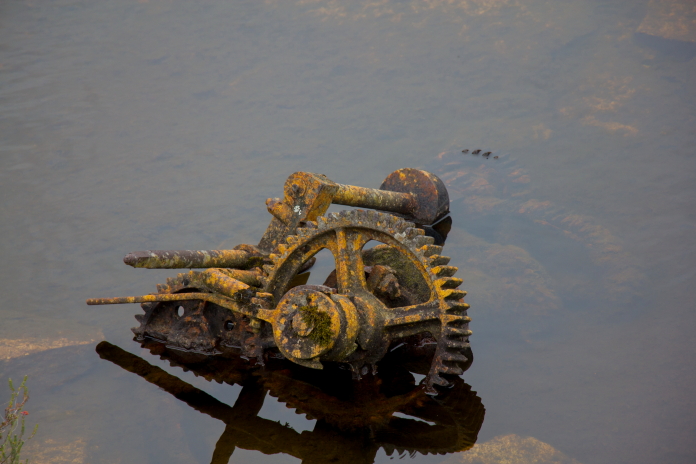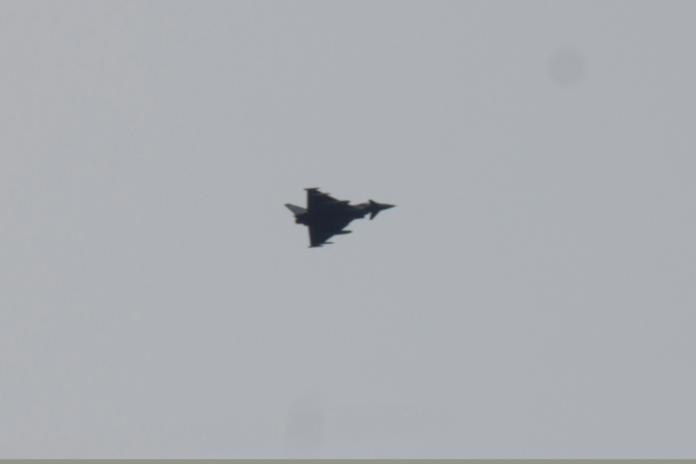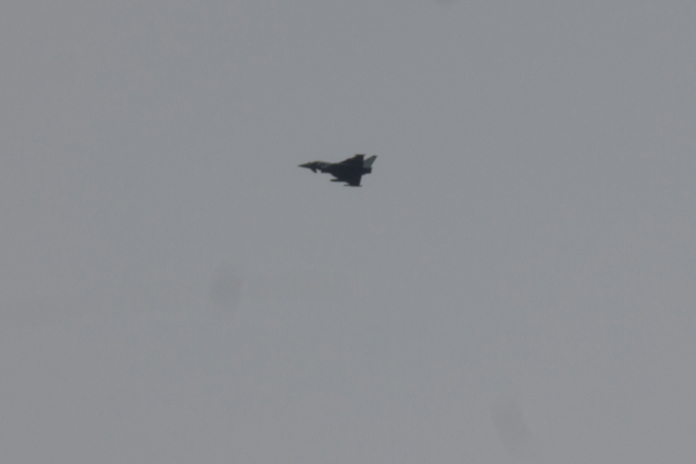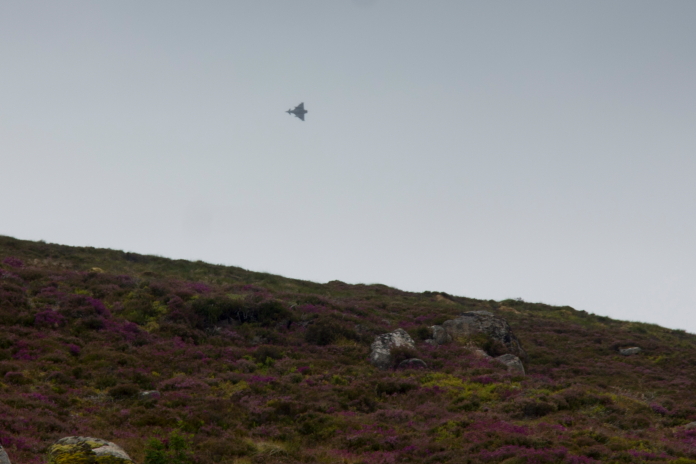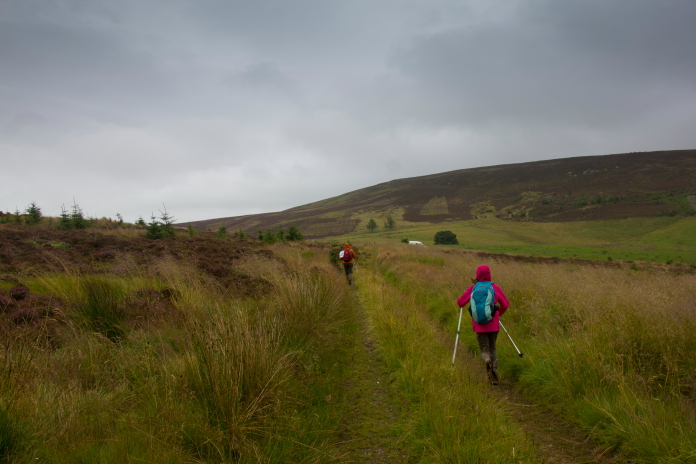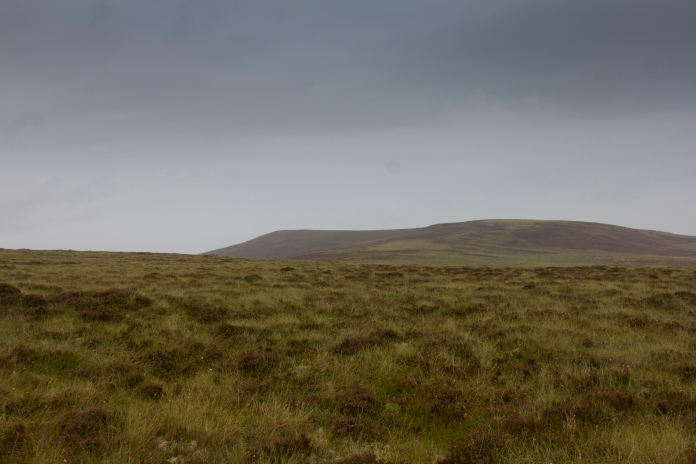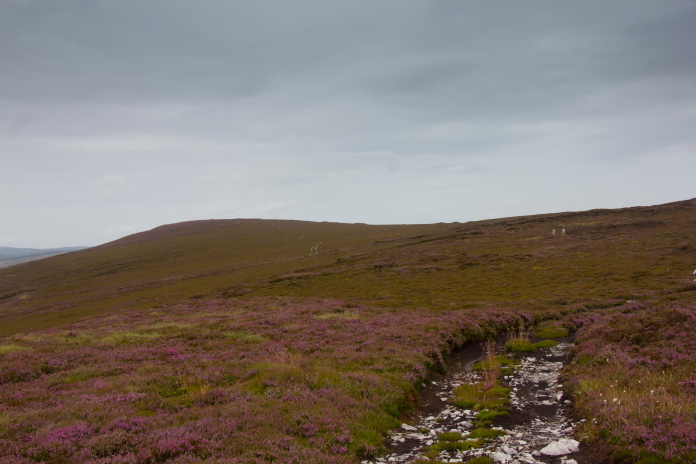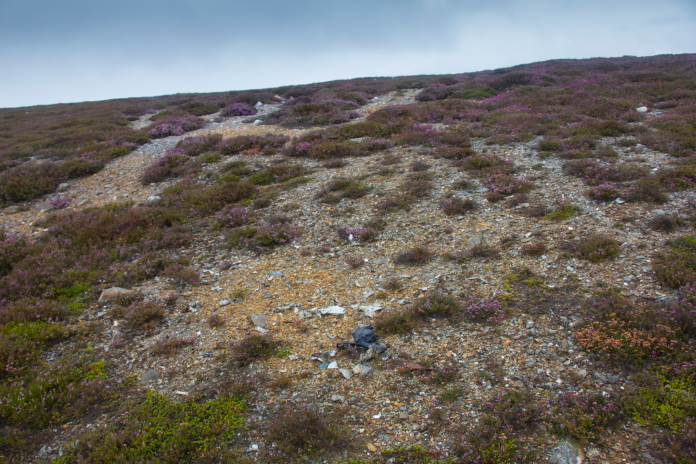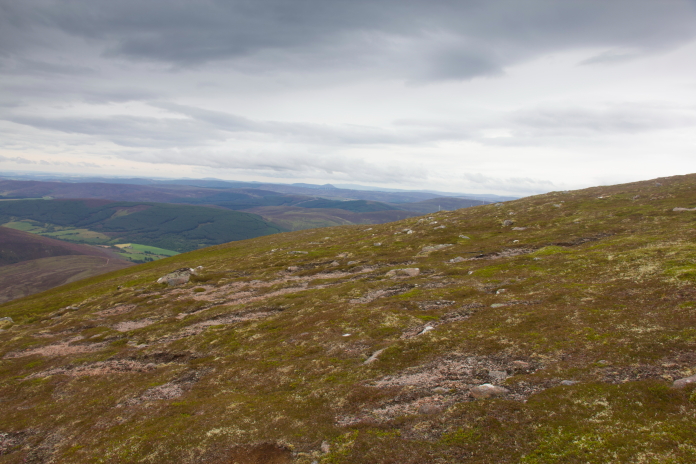Blowing a Hooley.
Vickers Wellington HF746 on Ben Rinnes,
(Distance covered =
5.0 mile/Ascent =+608m)
Hawker Hunter XG261 on the Scalp.
(Distance covered =
4.5 mile/Ascent =+230m)
Day 4 of my 2020 walking holiday in Scotland. The first three days we'd enjoyed some reasonable weather but this day was forecast to be heavy rain and high winds, becoming worse in the afternoon..
Despite the poor weather prediction we decided to chance our luck and set off really early in the hope of at least reaching one crashsite before the weather deteriated too much. So, after spending a reasonably comfortable night wild camping in some woods near the start of our walk, we set off up a path that lead to the summit of Ben Rinnes.
The start of the path to Ben Rinnes.
As we set off up the mountain path the weather was OK, and it wasn't raining, so our hopes were high that we would indeed make it up to the remains of the Vickers Wellington that crashed near the summit of Ben Rinnes. However as soon as we gained a little altitude the wind began to pick up and the higher we climbed the more it increased in force.
Crossing another Roy's Hill* on the ascent
of Ben Rinnes.
As we were about half way up to the summit of Ben Rinnes and experiencing some gale force winds we were passed by a very small and skinny middle aged woman out fell running. We decided to use her as incentive to keep going, so agreed we wouldn't stop for a breather unless she did; she didn't! she just kept running, right up and over the summit until she was out of sight. Perhaps she had better incentive than us to keep going as if she'd stopped she probably would have frozen or been blown away by the high winds.
The summit of Ben Rinnes.
Before we reached the summit we left the path and contoured around the northern slopes of the hill. This had the almost immediate effect of putting us on the 'leeward' side of the Mountain, where we discovered the weather was still actually quite pleasant once the wind had been removed from the equation.
Walking around the northern side of Ben
Rinnes, not far from the Wellington wreckage.
Above and below:-Pieces of Wellington HF746.
After finding the Wellington wreckage on the northern slope of Ben Rinnes our plan had been to drop straight down to a landy track that ran around the north eastern base of the summit. Before that I quickly nipped further up the hill to see if there were any bits up there that we had missed. I ended up quite near the trig pillar on the top of the mountain; up there the wind was intolerable and it was difficult to stay on my feet and indeed one exceptionally strong gust put me face down in some sandy gravel. This impromptu lie down proved very fortuitous however as while I was down there I spotted quite a few small fragments of the Wellington mixed in with the sand and gravel.
above and below:-Some fragments of Wellington and a .303 bullet lying in a gravel filled scar.
There were quite a few tiny pieces scattered around in the gravelly area where the wind had blown me over, including a lot of melted alluminium, this would suggest the scar was where the Wellington had finally come to rest and burnt out. I would hazard a guess that the other piles of wreckage further down the hill had been blown there, then collected together into little piles by someone.
The area where HF726 ended it's final flight and burnt out.
We had been tipped off by Chris that there was another piece of the Wellington down on the Landrover track to the north east so once down onto the track we began searching for that. After walking along the track for a some distance we could find no sign of this other piece but a quick phone call to Chris solved the problem.
On the Landy track to the north east of Ben Rinnes.
The mystery bit on the track was actually a piece of fuel tank and it lay beside some old quarry workings almost a mile along the track from where we'd joined it and also 1 mile as the crow flies from the other wreckage up on the hill. Being so far from the crashsite it must have been dropped there by a souvenier hunter or possibly fell off the back of a lorry while they were recovering the wreckage at the time of the crash.
Piece of Wellington fuel tank, quite a way from the rest of the wreckage,
location of which is indicated by the red arrow.
Reduction gear from one of the Wellingtons engines, found near the fuel tank.**
As we were about to set off walking back along the track we heard a rather impressive growling noise going down the Glen on the other side of Ben Rinnes. As Stuart had worked on it's design he instantly recognised it as an RAF Typhoon. Cameras at the ready we patiently waited to see if it would make an appearance on our side of the hill but it kept roaring up and down the glen out of sight on the other side. We eventually got a couple of glimpses of it in the distance as it performed quite steep turns at each end of the glen.
above and next two photos:- The teasing Typhoon.
Encouraged by the fact we had made it to the Wellington wreckage and back
again without experiencing any rain whatsoever we headed east with the
intention of visiting the crashsite of a Hawker Hunter on a hill called
'The Scalp'.
By the time we parked our cars beside an old quarry on the A941
just east of Glen Fiddich it was absolutely pishin it down with rain;
after waiting a while to see if it eased off it didn't, but as we were
there we decided to give it a go anyway so we donned our waterproofs and
set off into the gloom.
Walking up a soggy track between Meickle
Balloch Hill and Garbet Hill. The white object in the distance to the
right of the track is a Citroen Berlingo Van.
While walking along a rough overgrown and slightly damp track we passed am elderly man who was up there fixing a fence, but was sitting in his Van sheltering from the rain. This was just the sort of person you want to bump onto when out searching for a crashsite, but on this occasion we knew exactly where that was already so had to make do with his tales of old cheilidhs in the local town hall and how he'd lived there all his life and was born in the ruined farm building we could see in the distance. We didn't think to ask him how he'd managed to get his little van so far up onto the moor without becoming stuck!***
We weren't looking forward to crossing this in the driving rain, a classic 1.5 mile bog slog!
Onto The Scalp. the going became a little better, the weather didn't.
Although it was raining and windy at least the visibility was still quite good and because my new waterproofs, which I'd bought for the trip, had stood up quite well to the precipitation thrown at us, I still managed to enjoy the walk. Although it was a tadge nippy while we were on top of The Scalp we still spent a little time looking around at the thousands of pieces of the Hunter that were scattered around the crater where it had impacted the hill.
The scattered and fragmented remains of Hawker Hunter
XG261.
A canny day's walking despite the atrocious weather and to finish the day off nicely we headed off to the nearest KFC to grab some scran, which turned out to be the nicest KFC I have ever tasted, helped by the fact it was half price thanks to the covid19 eat out to help out scheme!
**--Don't worry just winding youz up; I know that it's not really a reduction gear from one of the Wellington's engines it's actually just a bit of old mine working equipment found in an old quarry adjacent to where we found the bit of Wellington fuel tank.
***--No!, He didn't use the track as his van was on the other side of a ditch and a fence.
